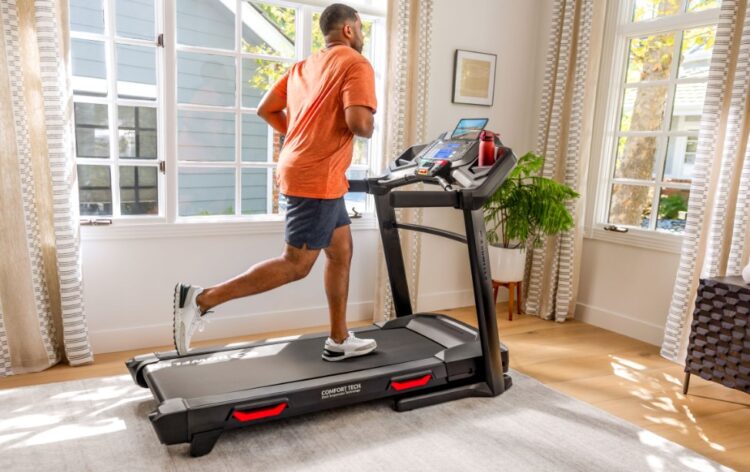A treadmill is a valuable investment in your fitness and well-being, providing a convenient way to stay active and healthy in the comfort of your home. To ensure that your treadmill continues to perform optimally and serves you well for years to come, regular maintenance is crucial.
By following a simple and consistent maintenance routine, you can extend the lifespan of your treadmill and avoid costly repairs. In this article, we will guide you through essential treadmill maintenance tips to keep your machine in its best condition.
Read the Manufacturer’s Manual
Before diving into maintenance, it’s essential to read and understand the manufacturer’s manual that came with your treadmill. The manual contains valuable information about specific maintenance requirements, recommended cleaning products, and any warranty stipulations.
Familiarise yourself with the guidelines provided by the manufacturer to ensure you’re taking the right steps to care for your treadmill properly.
Keep it Clean
Regular cleaning is one of the simplest and most effective ways to extend your treadmill’s lifespan. Dust, dirt, and debris can accumulate over time and cause friction, leading to premature wear and tear. Follow these steps to keep your treadmill clean:
Daily cleaning
After each use, wipe down the treadmill’s surfaces, including the console, handrails, and frame, with a soft, damp cloth. This will prevent the buildup of sweat and dust.
Weekly cleaning
Once a week, clean the treadmill’s belt and deck. Use a vacuum cleaner with a soft brush attachment to remove any dirt or debris from the belt and under the treadmill. Avoid using harsh chemicals, as they can damage your machine.

Lubricate the belt
Proper lubrication is vital to reduce friction and wear on the treadmill’s belt and motor. Check the manufacturer’s guidelines for the recommended lubrication schedule and use a silicone-based lubricant specifically designed for treadmills. Over-lubrication can be as harmful as under-lubrication, so be cautious and follow the instructions carefully.
Frequency
Generally, treadmills need to be lubricated every three to six months, depending on the frequency of use.
Signs of needing lubrication
If you notice the belt sticking or hear a squeaking sound while using the treadmill, it may be time for lubrication.
Check and tighten bolts
Regularly inspect all the bolts and screws on your treadmill to ensure they are properly tightened. The constant movement and vibration during workouts can cause these components to loosen over time. Use a wrench or screwdriver to tighten any loose bolts, but be careful not to overtighten, as this can strip the threads.
Inspect the running belt
The running belt is a critical component of your treadmill, and regular inspection is essential to prevent accidents and ensure smooth functioning.
Alignment
Check the belt’s alignment by standing on the side rails and observing the belt as you run it at a slow speed. The belt should run straight without rubbing against the edges.
Tension
Proper tension is crucial. A loose belt can slip, and an overly tight belt can strain the motor. Refer to your treadmill’s manual for guidelines on adjusting the belt tension if needed.
Condition
Inspect the running belt for signs of wear, fraying, or damage too. If you notice any issues, it may be time to replace the belt.

Monitor the motor
The motor is the heart of your treadmill, and its performance directly impacts the machine’s lifespan.
Airflow
Ensure that the motor has adequate airflow to prevent overheating. Keep the area around the motor clean and free from obstructions.
Cool Down
After each use, allow the treadmill to run at a slow speed for a few minutes to cool down the motor before turning it off.
Check the safety features
Modern treadmills come equipped with various safety features, such as an emergency stop button and a safety key. Regularly inspect these features to ensure they are functioning correctly. The safety key, in particular, is crucial, as it will automatically stop the treadmill if you accidentally detach it during a workout.
Elevate the Treadmill
If your treadmill is stored in an area with a concrete or hard floor, consider using a treadmill mat to elevate it slightly. This can help reduce dust and debris buildup, as well as protect the floor from potential damage caused by treadmill vibrations.

Schedule professional maintenance
While you can perform most treadmill maintenance tasks yourself, it’s a good idea to schedule professional maintenance at least once a year. A certified technician can conduct a thorough inspection, perform any necessary adjustments, and identify potential issues before they escalate into significant problems.
Follow proper usage guidelines
Proper usage is essential to maintain your treadmill’s longevity. Avoid overloading the machine with excessive weight, and refrain from using it for purposes other than walking, jogging, or running. Don’t allow children or pets to play on or near the treadmill, and always wear appropriate footwear while using it.
Conclusion
Regular maintenance is the key to extending the lifespan of your treadmill and ensuring it continues to provide a smooth and safe workout experience. By following these maintenance tips and incorporating them into your routine, you can enjoy the benefits of your treadmill for years to come.
Remember that a well-maintained treadmill not only saves you money on repairs but also contributes to your overall fitness and well-being. Treat your treadmill with care, and it will reward you with countless miles of enjoyable and effective workouts.
 Hi Boox Popular Magazine 2024
Hi Boox Popular Magazine 2024



